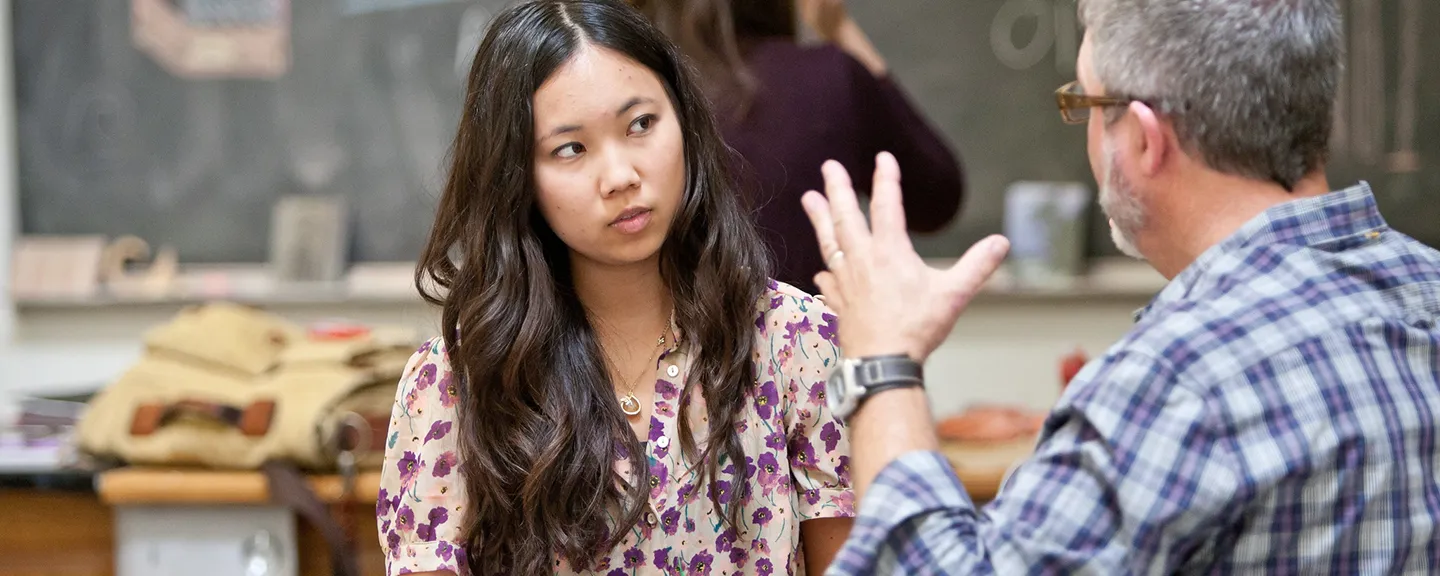- Home
- >
- APU Articles
- >
- News Article
The Life-Changing Benefits of K-12 Art Education
June 04, 2019 | Written By Stephanie Thurrott

The study included 10,000 third- to eighth-grade students. Those who were exposed to in-depth arts curriculum, including dance, music, theater, and visual arts during before- and after-school programs, field trips, school performances, and sessions with resident artists, were compared to those who were not. Ultimately, the study found that students who had access to art education exhibited fewer disciplinary problems, better writing scores, and more compassion for others.
Those students were also more engaged at school, more likely to aspire to college, and more inclined to use art to empathize with others. The report even suggested that art education might improve school climate, empower students, and increase the respect students have for their teachers and peers.
Art Education Teaches Valuable Life Skills
Kelsey Wengel, MA ’20, knows firsthand how art education can impact students’ lives. Wengel currently works as a high school visual arts teacher and district art lead in Pleasanton, California. “Our art classroom is a lively, happy, inclusive space, where students of all abilities are welcomed and encouraged,” she said. “Producing art is a window into the soul, and teaches us so much about our students socially, emotionally, and academically.”
Wengel noted that the skills students learn in art classes—playing music, singing, critiquing, creating, exploring, and taking risks—are skills that are important in every person’s life.
APU Offers a Specialized Master’s Degree
Wengel was searching for a master’s degree program that was the right fit for her. As a visual arts teacher, she wanted a specialized degree focused on her career. And as a working mom with two young children, she also needed a program with the flexibility to fit her schedule. She found exactly what she was looking for at Azusa Pacific University.
“APU’s new MA in Art Education fit my needs perfectly,” she said. The 30-unit low-residency degree combines convenient online courses and two one-week summer intensive practicums at the main campus. It’s a launching pad for a range of careers in art education. Additionally, the online aspect allows students like Wengel to maintain a day job, be home with children, and hop online for classwork when it’s most convenient.
Wengel started the program with a week-long intensive session during the summer that offers hands-on, process-oriented studio collaboration. It’s a week where students connect, refine techniques, and make art in a supportive, intimate environment.
That proved to be a valuable starting point for Wengel. “In that one week, we met the faculty and students within the fine arts department, and also had a chance to meet and bond with our future classmates,” she explained. “Although it was only one week, we accomplished so much.”
Student Spotlight: Kelsey Wengel, MA ’20
The Flexible Program Accommodates Working Professionals
While Wengel chose to begin her studies during summertime, the program offers five entry points every year. Along with the summer intensive, students take one focused online class for an eight-week session and just two classes total per term.
As part of the program, students learn from professional faculty who are deeply engaged in the art world. “I really valued the personal relationship the professors and program director Erin Weaver took with us,” Wengel said. “She went above and beyond to make sure we had a valuable experience.”
Wengel notes that she is committed to using her degree to promote education in the arts. “I believe all children deserve and are owed a positive experience within the fine arts in their schools,” she said. “I aspire to build visual arts programs up to a higher standard and to make art a part of every child’s day.”